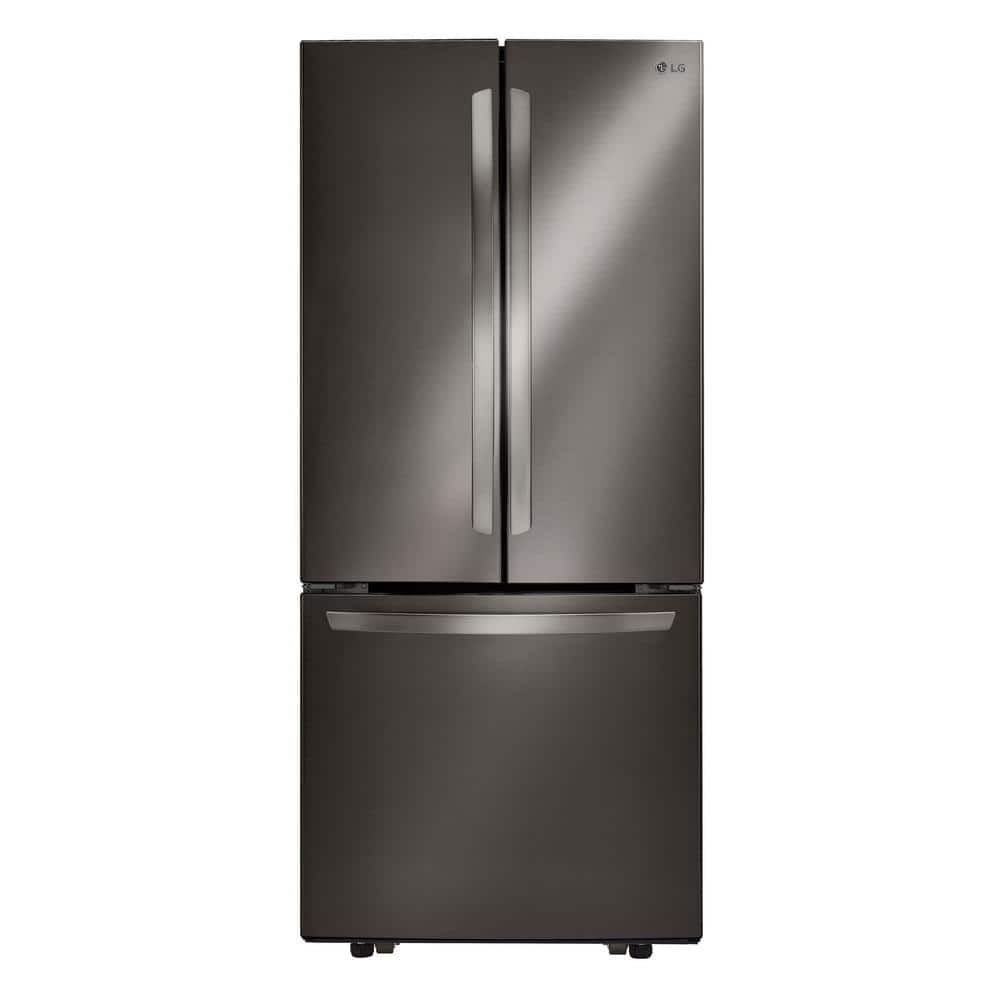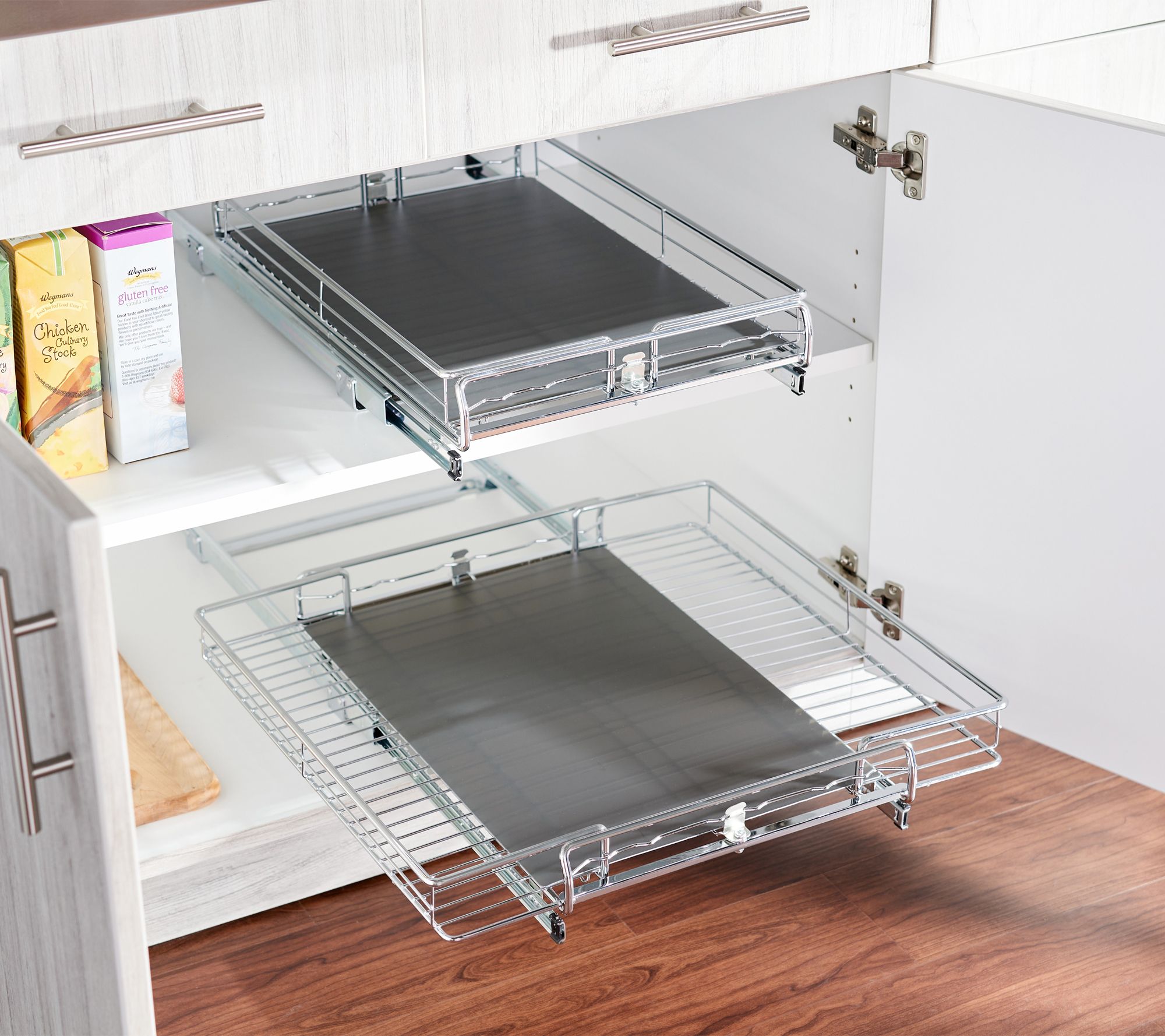LG Electronics 30 in. W 21.8 cu. ft. French Door Refrigerator in Black Stainless Steel
Smart Cooling system helps keep your food fresher, longer. Features two crisper drawers and fingerprint resistant finish. 30 in. width fridge easily fits narrow and small kitchen spaces.
You don’t have to sacrifice style when shopping for smaller kitchen spaces. With a generous 21.8 cu. ft., LG’s stylish French door refrigerator gives you 10% more capacity in the same 30 in. W. Not only does that mean more room for groceries, but Smart Cooling technology helps all that extra food stay fresher, longer.
- Save money and energy with this ENERGY STAR-certified LG refrigerator that exceeds federal guidelines for energy efficiency
- Factory-installed ice maker provides you with a steady supply of ice any time you need it
- Up-front temperature controls make temperature management easy by placing the interior controls at the front of the refrigerator
- Smart cooling system allows Multi-Air Flow technology vents cold air on each shelf for more uniform temperature throughout the refrigerator; digital sensors are utilized to monitor refrigerator, freezer and room temperature to ensure consistent temperature for optimal food storage
- 2 humidity-controlled crispers optimize humidity, extending the life of most fruits and vegetables
- 6 adjustable gallon-sized door bins to store your gallons of milk or juice on the door, freeing up shelf space
- Large-capacity 14.5 cu. ft. fresh food capacity provides additional interior space, while 7.1 cu. ft. freezer capacity allows for additional storage space
- 10-year limited manufacturer warranty on linear compressor, which uses fewer moving parts and operates more efficiently for quieter performance
- Glide N’ Serve Drawer for added storage and versatility
- Premium recessed LEDs provide light in the fresh food section
- Satin-smooth Black Stainless Steel finish is resistant to fingerprints and easily wipes clean with a soft, dry cloth
- ENERGY STAR certified to help you save money and energy
Additional information
| Depth (Excluding Handles) (In) | 33.25 |
|---|---|
| Depth (Including Handles) (In) | 35.5 |
| Depth (Less Door) (In) | 29 |
| Depth With Door Open 90 Degrees (In) | 44.75 |
| Height to Top of Door Hinge (in.) | 68.5 |
| Height to Top of Refrigerator (in.) | 67.25 |
| Product Depth x Height x Width (in.) | 35.5 x 68.5 x 29.75 |
| Refrigerator Width (In.) | 29.75 |
| Certifications and Listings | Energy Star,UL Listed |
| Manufacturer Warranty | 1 Year Parts & Labor, 5 Years Sealed System and Compressor, 6-10 Years Linear Compressor. |





by Alan
My favorite feature is the bottom drawer of the refrigerator. It can either slid open or be opened via a lid in the front without having to open both the refrigerator doors.
by Helen
Great delivery and customer service. The refrigerator is beautiful, quiet and more spacious than expected!
by Kelvin
So far so good, no complaints. Looks good and runs quiet. Price was good also.
by Albert
The refrigerator was delivered without any incident and no scratches and the staff were very friendly and professional.
by Robby
It’s a really nice fridge, works great so far…no cold zones, ice maker works terrific, and it is pretty. My only complaint is the size, but we knew that going in. I’d buy this make in a bigger fridge, for sure. Oh, and magnets don’t stick to the front.